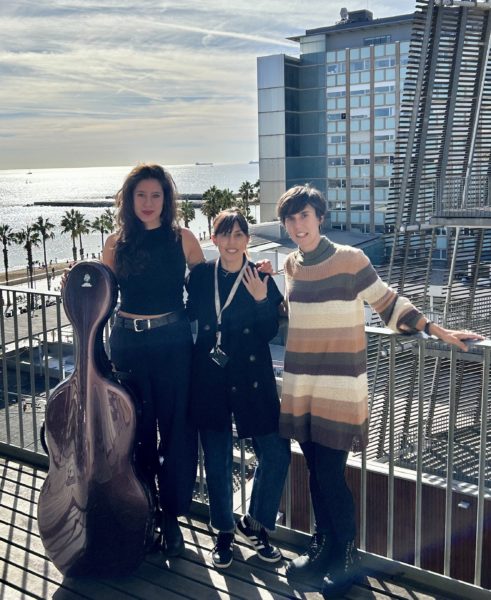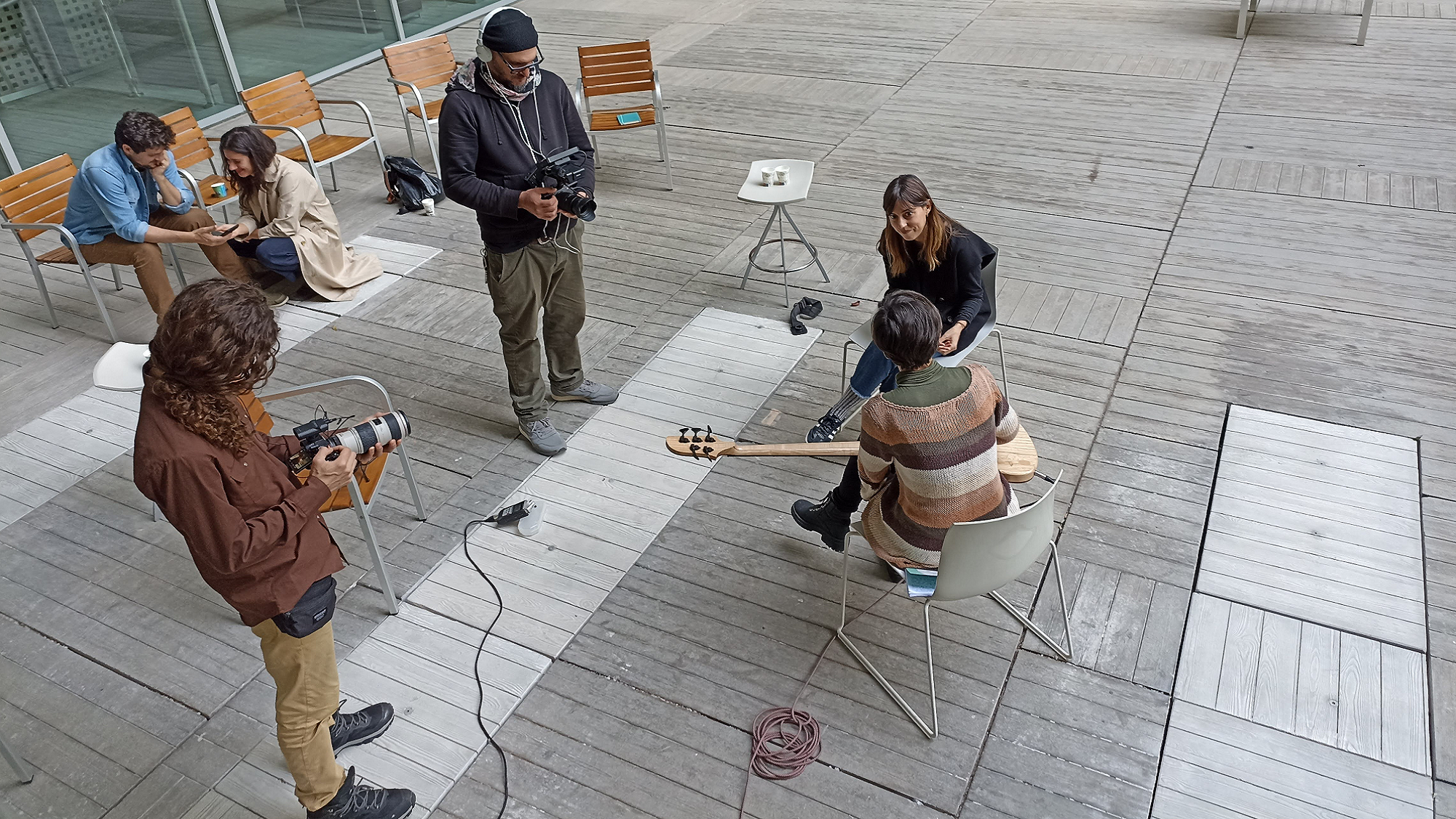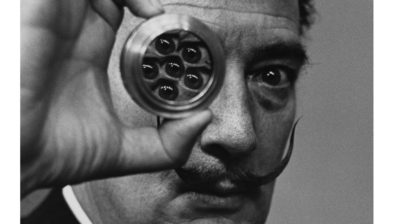Science and art, the eternal dichotomy… which is not such a dichotomy, as we are constantly reminded by various initiatives that break down these barriers. Some examples are the “Barcelona Dance your Science” project or the “Rhyme your science” competition, both organised by the PRBB, or the STARTS Residencies (Science, Technology and the ARTS) initiative, which brought a textile designer to the Centre for Genomic Regulation (CRG).
The “Música por la ciencia” (Music for Science) project is another example of bringing science and art together, this time not with dance, poetry or textiles, but with music. Created in Argentina by Clara Cantore, a bassist and composer, the project seeks to unite the two disciplines by interviewing researchers accompanied by a guitar, bass, cello or other instruments.
The “Música por la ciencia” initiative accompanies researchers on their scientific journey through songs.
Matilda Pfeiffer, a PhD student in Sara Sdelci’s lab at the Centre for Genomic Regulation (CRG), is part of the “Música por la ciencia” Fundation. She joined this initiative last year, in a dual role of musician, playing the cello, and public relations – helping, among other things, to choose relevant topics and scientific profiles to interview.
This is exactly what she did for the initiative’s European tour, which took place in Paris, Dijon, Barcelona and Madrid. The tour kicked off with an invitation to a conference on mental health in Dijon. Thus, mental health was the theme of the whole season.
That’s why Matilda, who recently arrived in Barcelona and at the Barcelona Biomedical Research Park (PRBB), brought the “Música por la ciencia” team to the park to interview two researchers:
- Matilde Elices, postdoctoral researcher in the mental health research group at the Hospital del Mar Research Institute.
- Lauren Fromont, from the Centre for Genomic Regulation (CRG), where she coordinates part of the European YOUTH-GEMs project, which is investigating the genetic and environmental factors that influence mental health trajectories in young people.
We spoke to the founder of the initiative, Clara Cantore.

What is the “Música por la ciencia” initiative and where did the idea come from?
“Musica por la ciencia” is a project that aims to disseminate scientific projects by creating a dialogue in which music is the common thread of the conversation.
One of the interests of the project is to find out how creative processes work within the world of science, in order to find common ground on which to build bridges that allow the general public to approach science through art.
Who is behind this project?
Many profiles are involved in this project:
- Artists (musicians, designers, etc.), audiovisual producers (cameramen, editors, producers) and technicians (web developers, new technologies).
- Scientists: collaborators in fields such as virology, neuroscience, chemistry or physics.
- Educators: within the AuLab platform, educators work on the design of pedagogical material to create a space for community creation and reflection. For example, concepts such as how error is essential for evolution, what error means in art (in music, perhaps an unexpected harmony…) and how an error specific to our discipline can be transformed into a new artwork.
What have you done so far?
So far we have published three seasons.
The first was in quarantine due to the coronavirus pandemic. The second was at the Leloir Institute in Argentina, with musicians playing in the lab. And the third was the reverse, recording in a studio with scientists from different fields talking about their creative process. Some of these sessions were even broadcast on public television in Argentina!
The one we are shooting now in Europe will be our fourth season.
Tell us more about this ‘European Tour’.
We were in Paris for the Intervoice Congress, which was dedicated to reflecting on the integral concept of health and the consensus of reality that has been established so far.
With this as a starting point, we worked with health scientists, as in the case of the PRBB, where we interviewed Matilde Elices and Lauren Fromont.
We also worked on the consensus of reality from a physics perspective, filming at the ALBA synchrotron with scientists working there and a scientist working at CERN.
What is your assessment of the project – what has it done for you on a personal level?
We have learned the importance of building multidisciplinary teams that bring complementary and diverse perspectives to approach issues that affect us as human beings in constant evolution.
On a personal level, my music has grown enormously by working with the world of science. We are now working on the post-production of the project, expanding this way of bridging art and science.
Thank you Clara. We hope to see the video-interview-concerts very soon!







